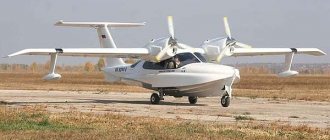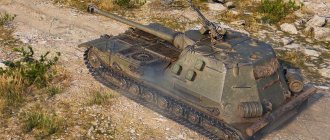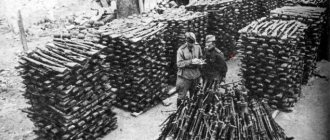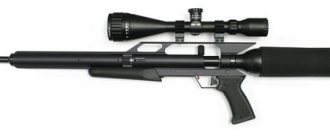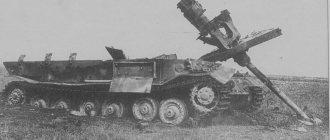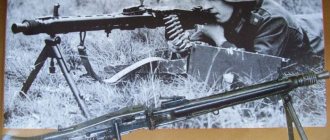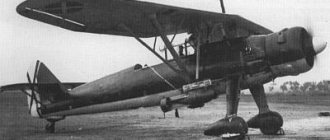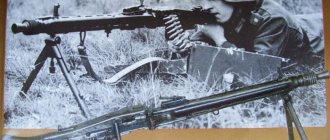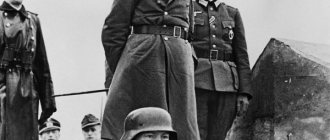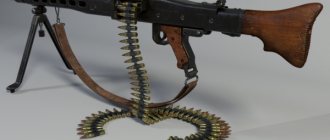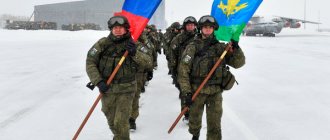Home » Books on aviation history » Hitler’s personal plane Focke-Wulf FW 200 “Condor”
Aviation history booksControversial history of the recent past
byakin 01/17/2019 3302
11
in Favoritesin Favoritesfrom Favorites 7
This material was translated by a respected colleague NF and slightly modified by me.
Accidents and incidents
- 6 December 1938 Deutsche Lufthansa Fw 200S-1 (D-ACON, Brandenburg
) crashed in Cavite Bay, Philippines after loss of engine power due to a broken fuel line; all six on board survived, but the aircraft was written off. The plane was on a promotional flight Berlin-Basra-Karachi-Hanoi-Tokyo. - On 22 April 1940, a Luftwaffe Fw 200S-10 “CB+FB” from I/KG 40 (formerly Deutsche Lufthansa D-ABOD Kurmark
) crashed during the invasion of Norway. - On 20 July 1940, two Deutsche Luftwaffe Fw 200C KG 40s were lost, one (F8-EH) shot down over Sunderland (Crew 3 lost/2 POW); another lost to Northern Ireland (cause unknown) (crew 2 Killed/3 POW)
- On 20 August 1940, a Luftwaffe Fw 200C-1 “F8+KH” of I/KG 40 crashed at FAHA Ridge, Cloughane, Ireland; all six on board survived and were interned in Ireland.
- On 22 October 1940, Luftwaffe Fw 200C-1 “F8+OK” of I/KG 40 went missing over the Irish Sea. Possibly an unknown bomber that sank the Irish ship "Kerry Head" in the Atlantic Ocean off Cape Clear Island, County Cork, Ireland reportedly: the bomber was shot down in an explosion; there are no survivors from any ship or aircraft.
A Focke-Wulf Fw 200C KG 40 sinks in the Atlantic Ocean west of Ireland, after being shot down by a Lockheed Hudson Mk V of No. 233 Squadron RAF 23 July 1941.
- On 15 June 1941, a Luftwaffe Fw 200A-0 “F8+CU” (formerly Lufthansa D-ADHR) burned out at Aalborg Airport after an engine fire.
- On 23 July 1941, Deutsche Luftwaffe Fw 200C KG 40 was lost in the Atlantic Ocean west of Ireland, after being shot down by a Lockheed Hudson Mark V of No. 233 Squadron RAF.
- On 22 October 1942, a Luftwaffe Fw 200C-4/U3 “F8+EK” of 1.(F)/120 and I./KG 40 was shot down by two USAAF P-39 fighters and crashed into Kleppatagl, Iceland, killing all seven on board .
- On 9 July 1943, a Luftwaffe Fw 200 from III/KG 40 shot down a British fighter and struck a rock near Aljezur, Portugal, killing all seven on board.
- On July 18, 1944, Adolf Hitler's personal Fw 200 V3 was destroyed in a bombing raid
- On 27 September 1944, a Deutsche Lufthansa Fw 200D-2 (D-AMHL) was shot down by RAF Bristol Beaufighter RAF 415 and crashed into Saint-Nicolas-le-Citeaux, France, killing all nine on board.
- On 29 November 1944, a Deutsche Lufthansa Fw 200A-0/S-5 (D-ARHW, Friesland
) was accidentally hit by a German patrol boat and crashed in Målkläppen, Sweden, killing all ten on board. - On 11 October 1944, a Luftwaffe Fw 200C-4 (radio code F8+ES, Operational number 0163) of 8/KG 40 crashed at Kvanntoneset, Norway due to a tail split while flying over the Lavanger Fjord, killing all 51 on board.
- On 21 April 1945, a Deutsche Lufthansa Fw 200KB-1 (D-ASHH, Hessen
) crashed near Piesenkofen, Germany, killing all 21 on board. This accident is the most dangerous accident involving the Fw 200. - On 4 September 1946, a Danish Air Lines (DDL) Fw 200A-5 (OY-DEM, Jutlandia
) crashed at Northolt Airport after landing in a crosswind; there were no casualties, but the plane was written off. - 13 December 1946 Polar Aviation Fw 200C-3 (CCCP-N400) forced landing from Ostrov Litne due to engine problem; all 21 on board survived, but the aircraft was written off.
- On 8 March 1947, a Cruzeiro do Sul Fw 200A-0 (PP-CBI, Abaitara
) was hit by a Panair do Brazil Douglas DC-3 (PP-PCK) which landed at Santos Dumont Airport, there were no casualties, but The Fw 200 was written off. - On April 23, 1950, the Polar Aviation MK-200 (CCCP-N500) flooded the runway and crashed at the Yakutsk airport due to crosswinds; All nine on board survived and the plane was written off.
Service tariffs
The management of Condor Airlines has developed rules and regulations for the use of services of three passenger classes - Economy, Premium and Business.
Depending on whether the flight is domestic (and nearby countries) or intercontinental, the passenger of each class receives a clearly regulated list of privileges and amenities.
Domestic flights (and nearby countries)
EconomyPremiumBusiness
- Comfortable seats, the distance between which is 92 cm.
- printed materials for reading;
- Documentary and entertaining films and TV series for viewing;
- snacks and hot drinks.
- All Economy class services;
- early check-in and seat selection on the Condor Airlines website;
- during the flight, the middle seat between two adjacent ones is not occupied, which provides passengers with additional free space;
- personal boarding and priority during security checks;
- soft and hot drinks to choose from;
- a wide range of printed publications.
Initial aircraft design[edit]
The aircraft had a fully riveted semi-monocoque fuselage made of light aluminum alloys and was equipped with 4 9-cylinder Pratt-Whitney C1E-G Hornet engines with a classic star-shaped cylinder arrangement, producing 875 hp. on takeoff. After the first flights, only minor changes to the fin design were required. Pretty soon V2 (D-AETA Westfalen) and V3 (D-2600 Immelman-III) flew. The latter became Adolf Hitler's personal plane. One of the two remaining Condors was ordered by the Reich Ministry of Aviation as a government aircraft. The second and third differed mainly in the installation of BMW-132 engines (licensed Hornet). The first Condors could carry 26 passengers in comfort over a distance of over 3,000 km without additional tanks. The B series Condors appeared at the end of 1939, had improved BMW engines, an increased fuel supply and a flight range of up to 3560 km, but by this time there was already a war in Europe.
We've reached America!
After lunch, at 13:40 Central European Time, a radiogram arrived from the crew:
"We see Newfoundland."
After 20 minutes the crew reported:
“Notre Dame Bay (Canada, Newfoundland). Flight altitude is 2000 meters."
The plane has reached North America! All that was left was to land the plane in New York. At 17:00 Central European Time, D-ACON flew over the port of Saint John located in the Bay of Fundy, and two hours later the plane was northeast of Boston. At 21:00, the management of Lufthansa in Berlin and Fokke-Wulf in Bremen received a radiogram:
"D-ACON reports: Arrived New York at 21:00."
More than a thousand people came to watch the plane land from Germany. Reporters and photographers watched the condor arrive from Berlin. The aircraft made an elegant turn and landed at 3:50 pm Eastern Time. There in Berlin and Bremen the clock hands showed 20:50. It took the four-engine Condor exactly 24 hours and 57 minutes to make a non-stop flight from the Old World to the New.
arrived to the American continent! D-ACON has extended its landing gear and is turning to land at Floyd Bennett Field. For the first time in aviation history, a large civil aircraft flew non-stop across the North Atlantic. Please note that the airport building is not yet suitable for developed air traffic.
The director of the American airport greets D-ACON commander Alfred Henke. Side by side from left to right: Walter Kober, Rudolf von Moreau and Paul Dierberg. Captain von Moreau died in a plane crash on March 31, 1939
300 police officers, at the request of the airport management, kept order at the airport when the Condor flew to New York from Germany
Application of civilian Condors
The Fw 200 was originally built for Lufthansa and has proven itself in transoceanic flights. The plane was expensive, and in Germany Lufthansa never had more than 4 operational aircraft. Fw 200A-02 OY-DAM "Denmark" and Fw 200A-05 OY-DEM "Jutland" have been the pride of the Danish airline Det Danske Luftfartselskab since July 1938, which used them for commercial transport. The Fw 200A “Denmark” was interned at Lansing Airport (Great Britain) in April 1940 after the capture of Denmark and was used first by the British Overseas Airways Corporation (British Airlines), and in 1941 by the Royal Air Force. Ribbentrop flew an Fw 200-V6 from the Luftwaffe transport reserve to Moscow in the summer of 1939. The last to be delivered abroad were in 1939, just before the war, two Fw 200A for Lufthansa's subsidiary in Brazil Syndicato Condor, where they were used until 1947. Fw.200B-2 (D-ASHH) was completed on April 14, 1945 .Lufthansa's last scheduled flight on the Barcelona-Berlin route; a week later he went missing in the vicinity of Munich.
"Führersessel" - Fuhrer's chair
The photo shows not only the Fuhrer’s seat, but also all the features of the cabin of his plane. Photo No. 4 shows the parachute straps placed behind the back of the chair. The parachute itself was usually located in a niche under the seat.
The literature says the following about this:
“His seat in the cabin had an armored back, an automatic parachute and was equipped with devices that threw the person sitting in this chair downward.”
Although at the same time, textual explanations prove the opposite, i.e. they are not true and these statements should be assessed as incorrect. This is nothing more than another “duck” that someone came up with and which began to be diligently reprinted further.
Photo No. 4 clearly shows that we are not talking about an automatic seat here. The back of the chair at the top is attached to the chair using two buttons, and in order to remove the parachute it was necessary to pull the backrest forward by a loop (photo No. 3).
And as for the ejection device: the reader himself, looking at photos No. 2-6, can see that this is not true. How was this chair, weighing a hundred pounds, supposed to be catapulted out along with Hitler sitting on it, unbelted? How was it supposed to move through the carpeted floor of the cabin? How was Hitler supposed to stay in the ejection seat? How was he supposed to avoid injury if the chair itself would have hit him hard during the ejection process???
Pilot Baur, answering a number of questions asked of him personally, noted that the installation of a special “Führersessel” seat was planned on the “Immelmann III”, but in reality it was installed only on military variants of the FW 200 C-4, received already in wartime. U-1 and C-4/U-2. He knew this for sure, since he mentioned that he had talked about this chair with Hitler and Goering. Goering believed that the Immelmann III should have parachutes. Hitler asked Baur about the presence of parachutes in the cabin for the rest of the crew, and when Baur answered this question in the negative, Hitler said:
"If Baur doesn't have a parachute, then I don't need a parachute."
When Bauru asked why he did not want to have a parachute, he replied:
“I’ve been flying for so many years and during the Great War I also flew without a parachute and this bitch * never happened even once.”
No! Here we must debunk the legend. The Immelmann III, created in peacetime, had not only parachutes, but also some kind of device that made it possible to quite conveniently leave the plane in the event of an accident. Who else could know so well about everything related to this issue if not a person who had flown on this plane for many years.
Photo #4 shows the "Führersessel", which was only installed on Hitler's later personal aircraft FW 200 C-4/U-1 and U-2. Baur further explained that the Führerstaffel (Hitler's squadron) had a total of 60 of these parachutes at their disposal, and these parachutes were never used for their intended purpose. Every 4 weeks they were unloaded from the plane, checked and dried, and during all these procedures they were replaced with spare ones.
About rivets
With a superficial glance, one can note a number of shortcomings in the historical part. The MG.42 machine gun, the appearance of which in 1941 is physically impossible, since it was put into service only the following year, as you can easily guess from the numbers in the name. A German squad, armed variably with Mauser 98K carbines and MP.40 submachine guns - in reality, there was only one submachine gun, the squad commander. These, however, are relatively uncritical things. We see such mistakes in almost all films about the Second World War, both domestic and foreign. You can forgive.
The equipment flashing in the frame also does not always look like the real thing. I was especially touched by the plywood-covered GAZ-69, which, apparently, should symbolize the Kübelwagen.” However, these are signs of a small budget and, by and large, if everything else in the film is good, they will not spoil it.
Finally, the weather. In the frame there is knee-deep snow, snowdrifts and, judging by indirect signs, severe frost. This doesn’t really fit in with the Vyazemsky Cauldron stated in the plot. It closed in mid-October, so it turns out that the heroes tried to break out of the encirclement for a month and a half or two. Of course, this also happened, but, to be honest, it seems somehow doubtful that a small group during such a time, firstly, survived, and secondly, did not find anyone to unite with - be it other encirclement or local partisans. Perhaps we are talking about the counter-offensive near Moscow in January 1942? But then why does the trailer insistently mention 1941?
Surviving plane
Only one relatively complete Fw 200 exists today, an aircraft that ditched in February 1942 and sank in 60 meters (197 ft) of water. This aircraft was recovered from Trondheim Fjord in Norway on 26 May 1999. Although the airframe disintegrated while being lowered onto the recovery platform, the remains were transported to the Deutsches Museum of Technology in Berlin to be restored. A request from the museum for a set of individual wings to be recovered from the Kvitanosi Mountains near Voss in Norway to complete the restoration was initially refused, as the local population wanted the wings to remain in place
like a war memorial. A compromise was reached in 2008 when parts not needed for restoration would be left on the mountain. During the fall of 2009, the pieces were moved down by helicopter and are being prepared for transport to the technology museum.
Bottom line
Fw.200 “Condor” is an aircraft that has come a long way. Having appeared as a promising passenger aircraft, it was not intended for military use, not counting, of course, transport missions.
However, the excellent characteristics of the vehicle made it possible to use it, albeit with some reservations, as a reconnaissance aircraft and even a bomber.
What prevented him from becoming a true aviation legend was the war, or rather his participation on the side of Nazi Germany, and then the birth of jet passenger aircraft.
Meanwhile, its contribution to combat operations, albeit in favor of the Nazis, turned this car into a certain legend.
Modifications
Fw 200A (Fw 200V) airliner Fw 200-S-1 modified for the Berlin-Tokyo flight Fw 200-V-1 “Brandenburg” Fw 200V10 long-range reconnaissance prototype Fw 200B-1 transport aircraft with BMW 132Dc engines in a single copy Fw 200B-2 transport aircraft with BMW 132H engines, 3 produced. Fw 200C-0 batch of 10 converted B series aircraft with a reinforced fuselage: the first 4 were unarmed transport aircraft, the next 6 were armed Fw 200C-1 long-range reconnaissance/bomber Fw 200C-2 C-1 with improved engine nacelles Fw 200C-3 reinforced wings and fuselage, 2 MG-15 machine guns were added on the sides and a gunner; engines Bramo 323 R-2 Fw 200C-3/U1 the machine gun on the top front was replaced by an MG-151 cannon Fw 200C-3/U2 new bomb sight Lotfe-7D, the bottom cannon was replaced by an MG-131 machine gun, the Fw-19 turret returned to the top in place of the cannon with an MG-15 Fw 200C-3/U3 machine gun, two machine guns on top of MG-131 steel, in the front of the EDL-131 Fw 200C-3/U4 turret the tanks were increased, a shooter was added; all machine guns became MG-131, in front again in the turret of the Fw-19 Fw 200C-4 the Rostock locators appeared, and then the Hohentwil Fw 200C-4/U1 (Werk-Nr 137) high-speed transport aircraft in 1 copy, built for the top of the Reich Fw 200C-4/U2 (Werk-Nr 138) high-speed transport aircraft in 1 copy, 14 Fw 200C-6 seats adapted to carry Henschel Hs 293 C-3/U1 and C-3/U2 anti-ship missiles. Fw 200C-8 specialized carriers for Henschel Hs 293 missiles
Technical characteristics (Fw 200 C-3 / U4)
Data
Warplanes Luftwaffe
General characteristics
- Crew:
five - Capacity:
30 fully armed soldiers in transport configuration - Length:
23.45 m (76 ft 11 in) - Span:
32.85 m (107 ft 9 in) - Height:
6.30 m (20 ft 8 in) - Wing area:
119.85 m² (1,290 ft²) - Empty weight:
17,005 kg (37,490 lb) - Maximum.
takeoff weight: 22,714 kg (50,057 lb) - POWER:
4 × BMW/Bramo 323R-2 nine-cylinder single-row air-cooled radial engine, 895 kW (1,200 hp) each
Play
- 360 km/h (195 kn, 224 mph) at 4,800 m (15,750 ft)
- 335 km/h (181 kn, 208 mph) at 4,000 m (13,100 ft) (Max cruise)
- Range:
3560 km (+1923 NMI, 2212 miles) - Wear resistance:
14 hours - Ceiling:
6,000 m (19,700 ft)
weapons
- Weapons:
1 × 7.92 mm MG 15 machine gun in
a Drehkranz D-30
front dorsal turret with 1125 rounds - 1 × 13 mm MG 131 machine gun in the rear of the turret with dorsal 1000 rounds
- 1 × 20 mm MG 151 cannon in the forward ventral gondola position with 800 rounds
- 1 × 7.92 mm MG 15 machine gun in the rear ventral gondola position with 750 rounds
- 2 × 7.92 mm MG 15 machine guns in flexible mounts, side-firing, one on each side of the fuselage with 1,500 rounds
up to 1,000 kg (2,200 lb) bombs internally or up to 5,400 kg (11,900 lb) externally on four PVC 1,006 underwing racks
Background[ | ]
In 1924, Captain Brandenburg, a former German Air Force officer in World War I and a protégé of the Ministry of Defense, was appointed head of the Civil Aviation Office in the German Ministry of Transport. From this time on, the development and management of civil aviation in Germany remained under the control of the military until 1945. Therefore, for every model of successful civil aircraft in the Luftwaffe, there was a plan for military use. Condor did not escape this fate either.
This aircraft was one of the favorite creations of Germany's most versatile aircraft designer of the 1930s and 1940s, Kurt Waldemar Tank. There is no doubt that the appearance and layout of the Condor took shape in his head even before the development of the aircraft project began: in the spring of 1936, the technical director of the Focke-Wulf Flygzeugbau company, Kurt Tank, in a conversation with the chairman of the board of Lufthansa, formulated the concept of a 4-engine airliner with a relatively high load on a wing capable of stably gliding due to its large span and thereby saving fuel during regular transatlantic flights. This later had a negative impact on the aircraft's maneuverability during combat missions, but this concept was fully consistent with the interests of Lufthansa.
Operators[edit]
Civilian operators[edit]
Brazil
- Cruzeiro do Sul
- Syndicato Condor - Serviços Aéreos Condor
Denmark
- Det Danske Luftfartselskab
Nazi Germany
- Deutsche Lufthansa
Great Britain
- BOAC
Military operators[edit]
Nazi Germany
- Luftwaffe
Soviet Union
- Soviet Air Force (post-war captured)
Spain
- Spanish Air Force (interned)
Great Britain
- Royal Air Force (one aircraft interned)
Performance characteristics
Data sources: "Wings of the Luftwaffe" Focke-Wulf Fw.200, JC Salgado "Focke-Wulf Fw 200 "Condor"
Fw 200-V-1 "Brandenburg"
- Type
- long-range airliner - Crew:
4 people - Length:
23.85 m - Wingspan:
32.84 m - Height:
6 m - Wing area:
118 m² - Empty weight:
9788 kg - Normal take-off weight:
14582 kg - Engines:
4 × radial BMW-132L 750 hp. - Propellers
: two-blade - Cruising speed:
330 km/h - Capacity:
26 passengers - Normal flight range:
over 3000 km with 4360 liters of fuel
Fw 200C-3/U4
- Type
- long-range naval reconnaissance/bomber - Crew:
7 people - Length:
23.46 m - Wingspan:
32.84 m - Height:
6.3 m - Wing area:
118 m² - Empty weight:
12960 kg - Maximum take-off weight:
22720 kg - Engines:
4 × radial 9-cylinder Bramo-323K-2 Fafnir 1200 hp on takeoff with injection of a water-alcohol mixture, 1000 hp near the ground without afterburner and 940 hp. With. at an altitude of 4000 m - Propellers
: three-blade - Maximum speed: at an altitude of 4800m:
360 km/h - at the ground:
306 km/h
- at an altitude of 4000m:
332 km/h
275 km/h
- 3536 km with 8050 liters of fuel
5800 m
Armament
- Small arms and cannon:
2x7.92 mm MG-15 machine guns with 1000 rounds each - in an Fw-19 hydraulically driven turret in the front of the fuselage and in the rear of the gondola - 3x13 mm MG-131 machine guns - one with 500 rounds on the top rear mount and two with 300 rounds per barrel in the side windows
- 1x20 mm MG-151 cannon with 500 rounds on a mobile mount in the nose of the lower gondola
up to 2100 kg bombs in a combination of 2x500 kg, 2x250 kg and 12x50 kg
: target designation locator "Hohentwil"
Carriage of baggage and hand luggage
The rules and limits in the field of baggage transportation for Condor Airlines passengers are clearly regulated.
Baggage transportation standards primarily depend on the class of service, flight direction and the number of seats occupied by the passenger.
For Economy class passengers (adults and children under 2 years old) the limit is 20 kg; for those traveling in Premium, the baggage limit increases to 25 kg. The maximum size in the sum of three dimensions (length + width + height) of luggage in this case can be up to 202 cm. The weight of hand luggage that you are allowed to take with you into the cabin should not exceed 6 kg, length - 55 cm, width - 40 cm, height – 20 cm. Carry-on luggage includes a laptop, umbrella, tablet, handbag.
The company also provides a payment service for excess baggage.
Comparison with other similar aircraft
Table: Comparative characteristics of aircraft
| Name | Pe-8 | Boeing B-17 Flying Fortress | Piaggio P.108 | Handley Page Halifax | Vickers Wellington | Short Stirling | Focke-Wulf Fw 200 Condor |
| Photo | |||||||
| A country | |||||||
| Manufacturer | CAPO | BoeingVegaruenDouglas | Piaggio | Handley Page | Vickers-Armstrongs | Short Brothers | Focke-Wulf Flugzeugbau GmbH |
| Length | 23.59 m | 22.66 m | 22.92 m | 21.86 m | 19.68 m | 26.6 m | 23.46 m |
| Wingspan | 39.13 m | 31.62 m | 32.0 m | 30.18 m(31.75 m) | 26.26 m | 30.2 m | 32.84 m |
| Wing area | 188.6 m² | 131.92 m² | 135.34 m² | 116.13 m²(118.45 mm²) | 78.04 m² | 135.64 m² | 118 m² |
| Empty mass | 19,986 kg | 16,391 kg | 17,320 kg | 17,345 kg | 8,417 kg | 12,960 kg | |
| Combat load | 5000 kg | 2300 kg | 3500 kg | 5897 kg | 2041 kg | 6350 kg | 2100kg |
| Maximum take-off weight | 35,000 kg | 29,710 kg | 29,500 kg | 29,710 kg | 12,927 kg | 31,751 kg | 22,720 kg |
| Engine | 4 × V-12 AM-35A | 4 × Wright R-1820-97 "Cyclone" | 4 x Piaggio P.XII RC.35 | 4 × Bristol Hercules XVI | 2 × Bristol Pegasus Mk. XVIII | 4 × Bristol Hercules XI | 4 × Bramo-323K-2 Fafnir |
| Maximum thrust | 4 × 1350 hp (4 × 1000 kW) | 4 × 1200 hp | 4 x 1500 hp (4 x 1120 kW) | 4 × 1615 hp (4 × 1205 kW) | 2 × 1050 hp (2 × 783 kW) | 4 × 1590 hp (4 × 1186 kW) | 4 × 1200 hp |
| Maximum speed | 443 km/h | 516 km/h | 413 km/h | 454 km/h | 378 km/h | 418 km/h | 360 km/h |
| Cruising speed | 400 km/h | 400 km/h | 376 km/h | 346 km/h | 346 km/h | 332 km/h | |
| Combat radius | 3600 km | 3219 km | 3520 km | 1658 km | 2905 km | 1191 km | 3536 km |
| Service ceiling | 9,300 m | 10,850 m | 8,500 m | 7,315 m | 5,486 m | 5,030 m | 5,800 m |
| Rate of climb | 5.9 m/s | 4.6 m/s | n/a | 4.88 m/s | 5.34 m/s | 1.82 m/s | n/a |
| Thrust-to-weight ratio | 140 W/kg | 150 W/kg | n/a | 195 W/kg | 130 W/kg | 176 W/kg | n/a |
| Small arms and cannon weapons | 2× 20 mm guns; 2× 12.7 mm machine guns; 2× 7.62 mm machine guns | 12×12.7 mm | 5 x 12.7 mm Breda-SAFAT machine gun; 2 x 7.7 mm Breda-SAFAT | 1 × 7.7 mm machine gun; 2 × 4 × 7.7 mm machine guns | 6-8 machine guns | 8 × 7.7 mm machine guns | 2x7.92 mm machine guns; 3x13 mm machine gun; 1×20 mm cannon |
Links[edit]
Notes[edit]
- "Friend or foe? Two four-engine bombers with one tail." Flight
16 October 1941, page
b
(between pages 256 and 257). - Jump up
↑ Wheeler 1992, p. 40 - ^ ab Karl-Dieter Seifert "Der Deutsche Luftverkehr 1926-1945" Bernard & Graefe Verlag, Bonn 1996 ISBN 3-7637-6118-7 (in German) pp. 303-304
- ^ abcdefg "A Quick Guide to Axis Aircraft of World War II" Compiled by: David Monday, Temple Press Aerospace 1984 ISBN 0 600 35027 4 pp. 73-74
- https://1000aircraftphotos.com/Contributions/VargaFerenc/10576.htm
- ↑
Joachim von Ribbentrop in Moscow, 1939 - Pimlott 1998, p. 52
- Stanaway 1997, p. 43
- Scutts 2008, pp. 220-252
- ^ a b Brown 1993, p. 15
- Brown 2006, p. 115.
- ↑
Kotelnikov, Article V.
Stalin's Captives
in the magazine
Fly Past
, February 2022, p.105 - Description of the accident for D-ASHH in the Aviation Safety Network. Retrieved August 22, 2022.
- [Mason "Battle of Britain". p. 183]
- "Lloyd's Register, Steamships and Motor Vessels" (PDF). Plimsoll Ship Data. Retrieved November 28, 2011.
- "FW200 F8+OK lost 22 October 1940" . 12 o'clock high! Forum
. October 8, 2009 - "233 Squadron". Retrieved October 1, 2007.
- Description of the criminal offense for D-AMHL in the Aviation Safety Network. Retrieved August 22, 2022.
- Criminal Offense Description for D-ARHW in the Aviation Safety Network. Retrieved August 22, 2022.
- "Focke-Wulf Fw 200 C-4 Condor F8+ES crash, 11 October 1944". July 18, 2022. Retrieved January 23, 2022. CS1 maint: discouraged parameter (link)
- Description of the accident for D-ASHH in the Aviation Safety Network. Retrieved August 22, 2022.
- Description of the accident for OY-DEM in the Aviation Safety Network. Retrieved August 22, 2022.
- Crash Description for CCCP-N400 in the Aviation Security Network. Retrieved August 22, 2022.
- Crash Description for PP-CBI in the Aviation Safety Network. Retrieved August 22, 2022.
- Crash Description for CCCP-N500 in the Aviation Security Network. Retrieved August 22, 2022.
- "Focke-Wulf Fw 200 'Condor': restoration of the Fw 200 'Condor' is one of the most significant aircraft restoration projects in Europe." Deutsche Lufthansa Berlin-Stiftung.
Date of access: December 29, 201. - "The restoration of the Fw 200 Condor is one of the most significant aircraft restoration projects in Europe". DLBS.
- "[Homepage]" . Restaurierung Fw 200 Condor
(in German). Retrieved December 28, 2022. - "Delete". trefall.net.
Access date: September 19, 2010. - ↑
Donald 1994, p. 90 - Jump up ↑
Green 1967, p. 79 - "Focke-Wulf FW 200 C-3/U4". Retrieved March 27, 2022.
Bibliography[edit]
- Brown, Captain E. Wings of the Luftwaffe
. Marlborough, UK: Crowood Press, 1993. ISBN 978-1-85310-413-8. - Brown, Eric. Wings on My Sleeve: The World's Greatest Test Pilot Tells His Story
. London: Orion Books. 2006, ISBN 0-297-84565-9. - Donald, David, ed. Luftwaffe combat aircraft
. London: Aerospace Publishing, 1994. ISBN 1-874023-56-5. - Green, William. Military Aircraft of World War II: Volume 9 Bombers and Reconnaissance Planes
. London: Macdonald, 1967. - Pimlott, Dr. John. An illustrated history of the German Air Force in World War II.
St. Paul, MN: Motorbooks International, 1998. ISBN 978-0-7603-0516-4. - Pullman, Kenneth. Focke-Wulf Condor: Scourge of the Atlantic
. London: MacDonald and Janes, 1978. ISBN 0354011642. - Scutts, Jerry. Fw 200 Condor
. Manchester, UK: Crécy Publishing, 2008. ISBN 978-0-85979-131-1. - Stanaway, John S. P-38 Lightning Aces of ETO/MTO
. New York: Osprey, 1997. ISBN 1-85532-698-1. - Wheeler, Barry K. Hamlyn's Guide to Military Aircraft Markings.
London: Chancellor Press, 1992. ISBN 1-85152-582-3.
Development
During the summer of 1936, the design of the aircraft and the construction of a fuselage model were carried out. In mid-July, Lufthansa placed an order for the aircraft, which the Reich Ministry of Aviation assigned the official designation Fw.200 Condor. Although it was larger than the RLM that followed in the numbering order, the aircraft designer Tank believed that it could become a kind of trademark of the aircraft. Possessing well-defined proportions and a large wingspan, the plane really resembled the condor, whose name it was named.
Tank’s confidence in his creation was such that the assembly of three prototype aircraft, which began in the fall of 1936, proceeded in parallel with the preparation for the release of nine pre-production aircraft. The first experimental Fw.200-V1 (D-AERE), named "Saarland", flew on July 27, 1937 - 12 months and 11 days from the start of work, and Kurt Tank himself took it into the air.
Wartime changes
The Reich Ministry of Aviation now itself needed such an aircraft, and after some strengthening of the load-bearing elements of the fuselage, it was put into service under the designation Fw 200C. Also on the Fw 200C, 3-bladed variable pitch propellers were used, in contrast to the 2-bladed ones on the previous Fw 200, and the engine nacelles were lengthened. Due to the increased weight, it was necessary to install dual wheels on the main landing gear. However, the first 4 aircraft of the series were essentially converted Fw 200Bs, the assembly of which began even before the war: transport aircraft without weapons, but with two-wheel struts, new engine cowlings and 3-bladed propellers. The first of the converted ones - Fw 200C-0 - was completed in January 1940, had the previous designation D-ASVX "Thuringen" and was accepted into the Luftwaffe (NA+WN). The remaining six Fw 200C-0s were completed with defensive armament and bomb racks on the engine nacelles, but without a manned nacelle under the fuselage. The third MG-15 machine gun was used to fire down through the hatch.
On aircraft of the new S-1 series, an observer gondola was mounted under the fuselage, shifted to the starboard side. It was equipped with a 20-mm MG-FF aircraft automatic cannon in the front and an MG-15 machine gun in the rear. The turret behind the cockpit was replaced by a canopy with a single MG-15.
Bomb load: the Fw 200C-0 and S-1 carried four 250 kg bombs on reconnaissance flights: one was suspended under the outer engine nacelles and two more were under the wing consoles. The S-1 variant also included the placement of one 250 kg “cement” bomb in the lower gondola, which was used as a marker to adjust the sight immediately before releasing high-explosive bombs.
The Fw 200C had an all-metal two-spar wing of three sections. Up to the rear spar the skin was metal, then fabric. Two-section ailerons occupied two-thirds of the console span, and slotted flaps. The crew usually consisted of five people: a pilot, a co-pilot, a navigator-radio operator-bombardier, a gunner-engineer and a bottom gunner. For bombing from low altitudes, the navigator-bombardier used the Revy sight.
History of operations[edit]
Focke-Wulf Fw 200 B Condor
of Deutsche Lufthansa (model)
Fw 200 D-2, export variant of the B-2 variant, ordered but not delivered by Dai Nippon Kabushiki Kaisha. Later operated by Lufthansa. [5] Budaörs Airport, 1938 (?)
Danish airliner Fw 200 Dania
at Fornebu Airport in Norway in 1939 with an early single-wheel main landing gear.
The Fw 200 was operated by Deutsche Lufthansa, DDL and Lufthansa's Brazilian subsidiary Syndicato Condor. [4] Dai Nippon KK of Japan also ordered Fw 200 airliners. After the outbreak of war, they could not be delivered to Japan, so they were delivered to Deutsche Lufthansa. [4] On 14 April 1945, the Fw 200 made Lufthansa's last scheduled flight before the end of World War II, from Barcelona to Berlin. [4] Other airlines continued to operate the Fw 200 after the end of World War II.
The first prototype, the Fw 200 V1, with additional fuel tanks and renamed Fw 200 S-1, achieved several record-breaking flights. It was the first heavier-than-air aircraft to fly non-stop between Berlin and New York (about 4,000 miles), flying from Berlin-Staaken to Floyd Bennett Field on August 10/11, 1938 in 24 hours and 56 minutes. [3] The return journey on August 13, 1938 took 19 hours and 47 minutes. [4] These flights are commemorated by a plaque on Böttcherstrasse, a street in Bremen. Beginning on November 28, 1938, it flew from Berlin to Tokyo via Basra, Karachi and Hanoi. [4]
German Foreign Minister Joachim von Ribbentrop used a specially equipped Grenzmark Condor on his two voyages to Moscow in 1939, during which he negotiated and signed the Non-Aggression Treaty between Germany and the Soviet Union. The original footage of his arrival shows his aircraft with German civil registration D-ACVH. [6]
A Danish-owned Fw 200 named Dania
was captured by the British on English soil following the German invasion of Denmark in 1940. It was subsequently operated by the British Overseas Airways Corporation (BOAC) before being adopted by Royal Air. Force. In 1941 it was damaged beyond repair.
Luftwaffe
initially used aircraft to support
the Kriegsmarine
, making a large loop throughout the North Sea and, after the fall of France, into the Atlantic Ocean. The aircraft was used for maritime patrol and reconnaissance, searching for allied convoys and warships that could be reported to target submarines. The Fw 200 could also carry a 1,000 kilogram (2,200 lb) bomb load or sea mines for use against shipping, and it was claimed that from June 1940 to February 1941 they sank 331,122 tons (365,000 t) of ships, despite a rather crude bomb sight. The attacks were carried out at extremely low altitudes in order to “pin” the target ship with three bombs; this almost guaranteed a hit. Winston Churchill called the Fw 200 "the scourge of the Atlantic" during the Battle of the Atlantic due to its contribution to heavy Allied shipping losses. [7]
After the debut, what will become the Luftwaffe's main naval
maritime patrol aircraft, rivaling the three-engine BV 138c flying boat in March 1941;
From mid-1941, [ edit
] Condor crews were instructed to cease attacks on cargo shipments and avoid all combat in order to maintain numbers. In August, the first Fw 200 was shot down by a CAM ship-launched Hawker Hurricane, and the arrival of a US-built Grumman Swift, powered by the Royal Navy's new escort carriers, posed a serious threat. On 14 August 1942, an Fw 200C-3 was the first German aircraft destroyed by USAAF pilots after it was attacked by P-40Cs and P-38Fs over Iceland. [8]
The Fw 200 was also used as a transport aircraft, especially to transport goods to Stalingrad in 1942. After the end of 1943, the Fw 200 began to be used exclusively as transport aircraft. For reconnaissance, it was replaced by the Junkers Ju 290 and even some examples of the Heinkel He 177 A that served with the KG 40. When France was liberated, Luftwaffe maritime reconnaissance became impossible as bases on the Atlantic coast were captured. Production ended in 1944, with a total of 276 aircraft produced. [9]
Fw 200 in Greece, circa 1941
Several damaged Fw 200s landed in Spain during the war. They were initially repaired and returned to their bases in France. Following Operation Torch (the Allied invasion of Africa), the Spanish government interned the four aircraft that arrived (although their crews were still allowed to return to Germany). Since the planes could not be used, they were sold by Germany to Spain. One of the three flying aircraft was then operated by the Spanish Air Force, and the rest were used as spares. Due to damage and lack of spare parts, as well as for political reasons, they were scrapped around 1950[ edit]
]
Some Condors also crashed in Portugal. Their crews were allowed to return to Germany, and British authorities were allowed to inspect the aircraft and accompanying documentation. Some crew members died in these accidents and were buried in the Moura Civil Cemetery in the province of Alentejo, Portugal. The aircraft, which crashed in Spain and Portugal, had been based in Bordeaux-Merignac, France, since 1940. Prior to this, the operational base of the Fw 200 squadrons was in Denmark. [ citation needed
]
Hitler's personal transport[edit]
| In this section do not cite any sources . |
Adolf Hitler's personal Fw 200 Condor with the Fliegerstaffel des Führers emblem on the nose
At the suggestion of his personal pilot Hans Baur, Adolf Hitler specified a modified and unarmed Condor prototype, and an Fw 200 V3, as his personal transport, as a replacement for his Junkers Ju 52. Originally configured as 26 seater
Lufthansa
transport (plant no. 3099), it was converted into a luxurious two-cabin airliner. Hitler's seat in the cockpit was equipped with a wooden table, seatback armor and an automatic parachute with downward throws. Baur said he was never armed. In keeping with Hitler's preferences for aircraft, it was marked "D-2600" and was named "Immelmann III" in honor of World War I flying ace Max Immelmann. During the course of the war, he changed the designation to "WL+2600" and, finally, “26 + 00”; it was destroyed at Berlin's Tempelhof Airport during an Allied bombing raid on July 18, 1944.
Options
A former Fw 200 airliner used as a Luftwaffe transport.
ASV radar-equipped Fw 200 C-4, showing the main twin-wheel mechanism used to produce all Fw 200Cs and the enlarged dorsal turret of the C-3/U1
There were three aircraft variants: Fw 200A, B and C. Model A was a purely civil variant used by Deutsche Lufthansa, DDL of Denmark, and Syndicato Condor
in Brazil.
The 200C Fw 200B and Fw models were used as long-range bombers, reconnaissance, troop and transport aircraft. Fw 200 V1 First prototype. Fw 200 V10 Military prototype. Fw 200 A-0 Pre-production of the fourth through ninth prototypes. Fw 200 B-1 Transport aircraft powered by four BMW 132Dc engines. Fw 200 B-2 Transport aircraft powered by four BMW 132h engines. Fw 200 C-0 Pre-serial production of 10 aircraft, structural reinforcement, the first four were manufactured as unarmed transport, the remaining six were equipped with weapons. Fw 200 C-1 First military production version, BMW 132h engines, fitted with a full-length Bola
ventral nacelle which added a narrow bomb bay to the airframe, enhancing defensive armament, provisions for four 250 kg (550 lb) bombs.
Fw 200 C-2 Similar to the C-1, but featured recessed lower to rear sheet metal on each of the two outboard engine nacelles, which reduced drag when HardPoint for a 250 kg (550 lb) bomb or 300 L (80 US gal) The capacity of the standard Luftwaffe drop tank was placed. Fw 200 C-3 Structurally reinforced, equipped with Bramo 323 R-2 radial engines. Fw 200 C-3 / Umrüst-Bausatz
1 (/U1) Recommended increased defensive armament, 15 mm MG 151 cannon in an enlarged front dorsal turret drive similar to those used for the BV 138's forward turret position, 20 mm MG FF replaced .
Fw 200 C-3/U2 Rooms with the original "hemispherical" dorsal turret, and had a 20 mm MG 151/20 at the forward end of the ventral Bola
gondola replaced by a 13 mm (0.5 in) MG 131 machine gun, which allowed space for Lotfe installation 7 D Sight.
Fw 200 S-3/U3 Numbers with two additional 13 mm MG 131s. Fw 200 S-3/U4 Had the 7.92 mm (0.31 in) MG 15 machine gun replaced with 13 mm MG 131s and carried an additional gunner. Fw 200 S-4 Similar to the C-3, but carries out a FuG Rostock
search radar; at the end of production aircraft the FuG 200
Hohentwiel
low-D range ASV search radar is used.
Fw 200 C-4/U1 (Werk-Nr 137) High-speed transport aircraft, only one example built with a shortened Bola
nacelle without a bomb bay.
Used to transport Adolf Hitler, Heinrich Himmler and Dönitz. Bearing Stammkennzeichen
letter code
GC + AE
.
Captured by the British and used as transport by them while based at the airfield B.164 Schleswig, flown frequently from Eric Brown - later RAE Farnborough with Mine air number 94
Fw 200 C-4/U2 (Werk-Nr 138) High-speed transport aircraft with a similar shortened
Bola
gondola (without bomb bay) to the earlier C-4/
Umrüst-Bausatz
version 1, with accommodation for 14 passengers, only one example was built.
Fw 200 S-6 Several aircraft were equipped with an early version of the FuG 203 Kehl
missile control transmitter series, carrying the Henschel Hs 293 missile and the re-diverted S-6.
Fw 200 C-8 Rooms with Lorenz FuG 200 Hohentwiel
low band UHF ASV maritime search radar as with some C-4 examples;
some examples equipped with a FuG 203b Kel
III missile control transmitter and mounted with the deployment capability of the Henschel Hs 293 MCLOS manual, anti-ship missiles—enlarged from a pair of nacelle external engine hardpoints. Fw 200 S-1 Special designation for the Fw 200 V1, which flew from Berlin to Tokyo. MK-200 Two Fw 200C-4 re-engined ASh-62IR engines, operated 1947 to 1950.
Combat use of the Focke-Wulf FW-200C
The FW-200C aircraft entered service with I/KG 40. They made their debut during Operation Wese-Rübung in April 1940, flying to reconnoiter Norwegian waters.
On April 18, the Condor flight for the first time attacked a naval target - the aircraft carrier Furies, which received minor damage. On June 9, the Vandik transport was sunk by an FW-200С off the coast of Norway. From August 1940, I/KG 40, based in Bordeaux, began systematic attacks on convoys, most of which were traveling without air cover. During August-September, the Condors sank ships with a total tonnage of 90,000 gross tons, and by the beginning of February 1941, this figure reached 363,000 tons (85 ships). The most resounding success was the destruction of the transport (former passenger liner) Impress of Briton (42,348 GRT), discovered by the Condor crew on October 26, 1940, 100 km west of Ireland. The dropped bombs damaged the ship, which was subsequently finished off by torpedoes from the submarine U-32, directed by the aviators. The Impress of Britain was the largest Allied merchant ship lost in World War II. When attacking ships, the Condors approached the target from a shallow dive from a height of 250-400 m, firing from a cannon installed in the gondola in order to suppress anti-aircraft guns on the ship. On January 6, 1941, the I/KG 40 group was transferred to operational subordination to the fleet command. And although a month later the group was returned to the Luftwaffe, since then the strike missions for the Condors have faded into the background - naval reconnaissance in the interests of submarine forces has become the main one. However, on occasion, bombing attacks were also carried out - for example, in June 1941, 5 FW-200C attacked convoy HS 65 350 km west of Portugal, sinking or damaging 8 ships. Strengthening the air defense of convoys by including ships with catapults, and later escort aircraft carriers, hampered the actions of reconnaissance officers and increased the losses of the Condors. In the second half of 1941, only 5 ships (12,000 GRT) were sunk by FW-200C crews. In August-September 1941, 6 FW-200С, based at Greek airfields, attacked facilities in the Suez Canal and ships in the Red Sea (1 ship was sunk).
From March 1942, I/KG 40 was based in Norway. It was her plane that discovered convoy PQ-17 on July 1, which was subsequently defeated by the combined efforts of the Luftwaffe and Kriegsmarine.
Although the losses of the FW-200C were increasing, current production made it possible not only to cover them, but also to begin rearmament of the HI/KG 40 group. It was this group that, with 8 aircraft, carried out a long-range raid on Casablanca (Morocco) on December 30, 1942, dropping almost 8 tons of bombs. But the encirclement of German troops near Stalingrad forced the allocation of 18 FW-200С to deliver supplies to the “cauldron” and evacuate the wounded from there. In operations over the sea, the Condors were gradually replaced by the He-177. On October 1, 1943, FW-200Cs carried out the last bombing attack on a naval convoy, without achieving success.
2 FW-200С-4 aircraft, which flew in 1943 and 1944. forced landings in Spain, were included in its air force. True, only one of them was brought to flying condition. Several Condors, which became Soviet trophies, were used as transport ones.
The FW-200C was a completely successful adaptation of a passenger aircraft to the role of a naval reconnaissance aircraft. However, it was not a full-fledged bomber, and the Condors’ successes in striking naval targets in the first half of the war were only a consequence of the weakness of the enemy’s air defense.
